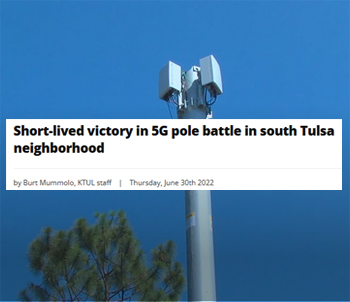The New York Times recently published an article under the headline “Radiation Fears Bring MAHA and MAGA Movements Into Conflict” — a piece which editorializes on the MAHA Report’s seeming consideration of tightening safety for cell phone radiation at the same time that the Trump administration weighs looser regulations for the nuclear industry.
While we at Environmental Health Trust are always encouraged to see serious discussion about the health impacts of wireless radiation, we were disappointed to see several factual errors, omissions, and misrepresentations in the article. We take the opportunity here to address these inaccuracies.
For background, the September MAHA Commission Report, Make Our Children Healthy Again, called for research to identify gaps in knowledge around health safety and efficacy of technology producing wireless radiation. EHT greeted this news enthusiastically and is pleased that the Times is shining a light on the call for research, but throughout last week’s article, the Times repeatedly used the misleading term “weak” radiation” to describe non-ionizing radiation—an apparent effort to diminish the seriousness of non-ionizing radiation by assigning it a term that sounds harmless.
“Exposure time is a crucial variable to consider in the discussion of radiation,” says EHT Vice President of Scientific Research and Clinical Affairs, Dr. Robert Brown. “X-ray intensity may be billions of times stronger than a microwave, a device that uses the same frequency as most Wi-Fi routers, and be capable of ionization, but the duration of X-ray exposure to obtain a diagnostic image is a fraction of a second. In comparison, people are receiving 24/7 exposure from wireless devices. These emanations may be markedly less intense, but it is the chronicity of exposure that leads to cellular oxidative stress, which can result in damaging health effects.”
Studies have shown that oxidative stress can lead to a variety of health issues, including recent research connecting oxidative stress to Alzheimer’s disease and dementia.
Dr. Brown continues: “To state ‘weak radiations do not penetrate beyond the skin’ is incorrect. If this were true, microwave ovens wouldn’t heat up food. All radiation penetrates through skin. Even light, at high intensities, can get beyond the protective barrier of chromophores in the skin and pass into and illuminate the body’s tissues. We recently published a scientific paper demonstrating clumping effects on circulating blood in deep veins from cell phone exposure, further proving deeper penetration of microwaves.”
The term “weak” as used throughout the Times piece is introduced in an uncredited image which presents a physics lesson with the unsubstantiated claim that the Trump administration is “loosening safety rules on strong radiations and tightening restrictions on weak ones.” The image caption simply says, “credit TK”—an editorial note which means that the source of the image is not known and needs to be added. Essentially, while The New York Times poses concerns over the loosening of nuclear regulations, it does so by creating a literary construct utilizing non-ionizing radiation as a tool to set up a binary choice between the risks of radiation from wireless technology versus nuclear power. The science shows that both types of radiation carry risks—unless you cherry-pick your sources as the Times does.
“The New York Times typically has opposed even reporting on wireless radiation harms. When it does, it fails to cite key facts, thus ignoring journalism ethics,” points out EHT President and General Counsel Joseph M. Sandri Jr.
“This Times article is a case in point. Despite the Times’ omissions and misrepresentations, it has long been established that cell phones and wireless infrastructure are tied to significant harms to humans and the environment. National Toxicology Program and WHO animal studies, among others, have established reliable evidence about the heightened risk of cancer. Other studies show negative impacts including and not limited to low sperm counts, anxiety, depression, and other maladies.” Mr. Sandri also points out, “Since the 2021 EHT v. FCC federal court ruling, the FCC has been under a court remand mandate to meaningfully revise its outmoded 1996 wireless exposure limits. The FCC has yet to comply.”


